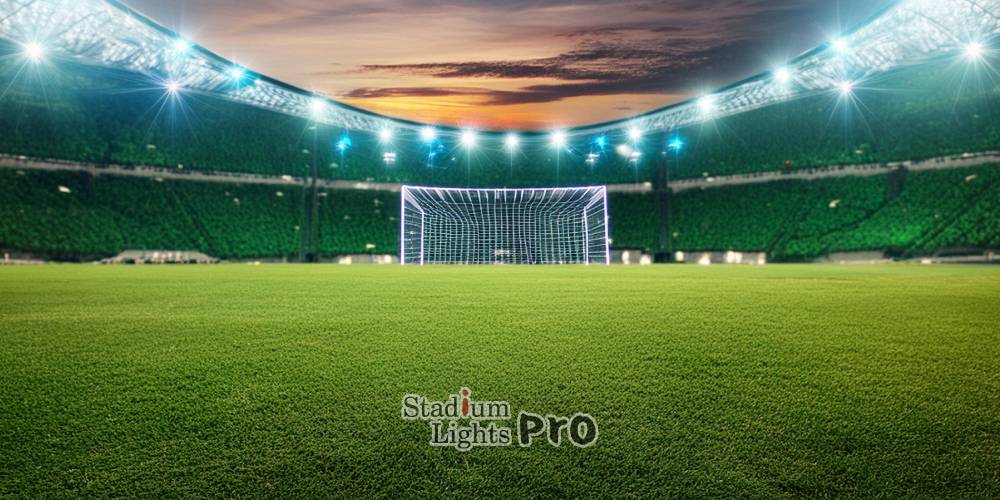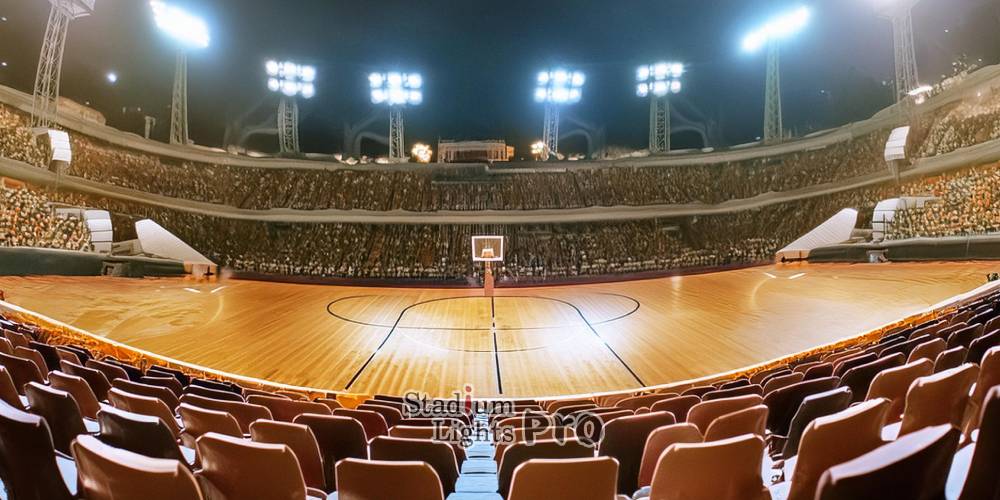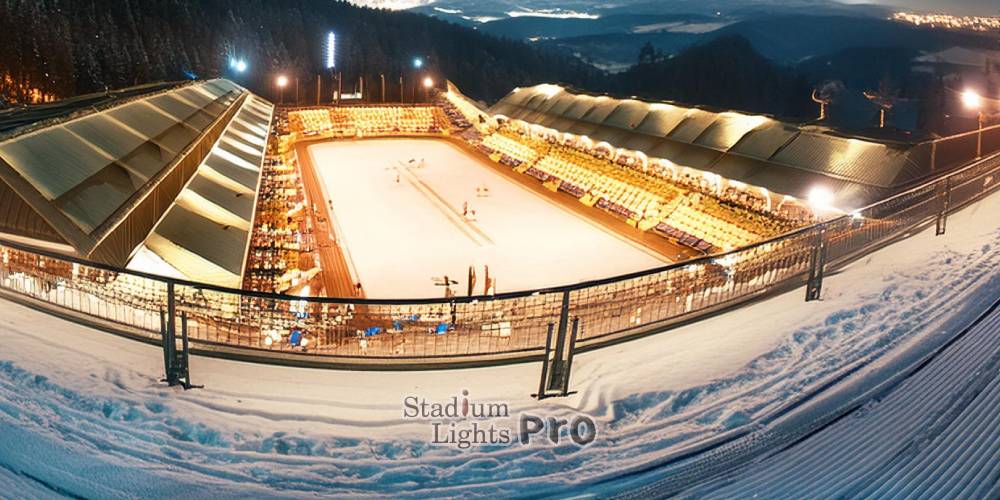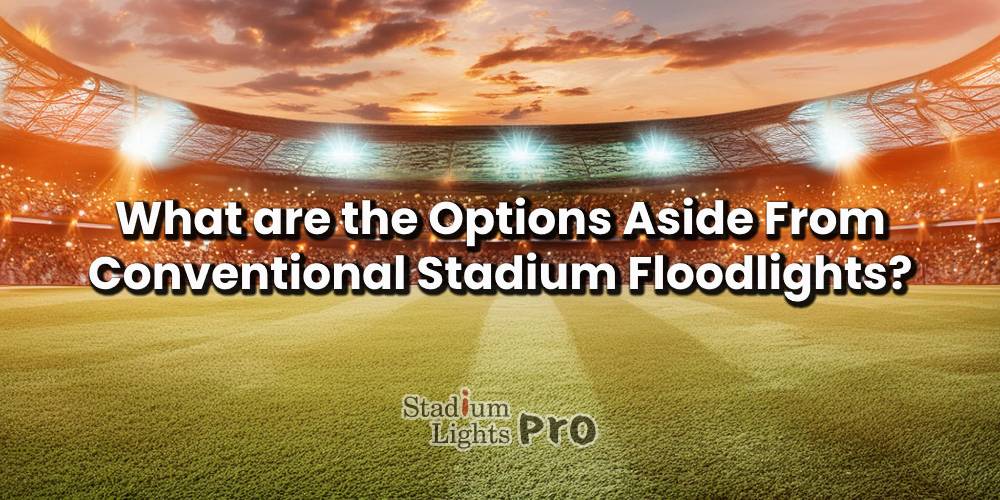Stadiums have long relied on conventional floodlighting systems to illuminate large areas during events. These systems typically consist of high-intensity discharge (HID) or metal halide lamps mounted on tall poles surrounding the venue. These floodlights provide broad, uniform illumination across the playing field, allowing for optimal visibility for both players and spectators alike. While conventional floodlights have served their purpose well over the years, there is an increasing recognition of their limitations in terms of energy efficiency, maintenance costs, and environmental impact.
Table of Contents
ToggleNeed for Exploring Alternative Options
As the world shifts towards more sustainable practices and technologies, there is a growing need to explore alternative options for stadium lighting. Conventional floodlights are notorious for their high energy consumption and associated costs. Additionally, the maintenance requirements for these systems can be cumbersome and expensive. Moreover, the environmental impact of conventional lighting, particularly in terms of carbon emissions and light pollution, is a concern that cannot be overlooked. Therefore, there is a pressing need to investigate alternative lighting solutions that offer improved energy efficiency, lower maintenance requirements, and reduced environmental impact while still meeting the stringent lighting demands of modern stadiums.

LED Lighting Solutions
Advantages of LED Technology over Conventional Floodlights
LED technology offers numerous advantages compared to conventional floodlights. Firstly, LEDs are highly energy-efficient, consuming significantly less electricity while still producing bright and uniform illumination. They also have a longer lifespan, reducing the frequency of maintenance and replacement, and thereby lowering overall operating costs. Additionally, LEDs are more environmentally friendly, as they contain no hazardous materials such as mercury and emit less heat, reducing energy waste. Moreover, LEDs provide instant illumination without warm-up time, allowing for instant control and adjustment of lighting levels.
Examples of Stadiums Using LED Lighting
Several stadiums worldwide have embraced LED lighting technology for its numerous benefits. For instance, the Allianz Arena in Munich, Germany, utilizes LED lighting to create dynamic color effects and enhance the spectator experience during events. Similarly, the Mercedes-Benz Stadium in Atlanta, USA, features a state-of-the-art LED lighting system that offers customizable lighting schemes for different events, enhancing visibility and atmosphere. These examples demonstrate the versatility and effectiveness of LED lighting solutions in modern stadium environments.
Cost Considerations and Long-Term Benefits
While the initial investment in LED lighting solutions may be higher than traditional floodlights, the long-term benefits far outweigh the upfront costs. LED lights consume less energy, resulting in substantial savings on electricity bills over time. Additionally, their longer lifespan and reduced maintenance requirements translate to lower operating costs and fewer disruptions to stadium operations. Moreover, LED technology allows for precise control of lighting levels and patterns, enabling stadiums to optimize energy usage and create engaging visual experiences for spectators. Therefore, despite the initial investment, the cost savings and long-term benefits of LED lighting make it a highly attractive option for stadiums seeking to upgrade their lighting systems.
Solar-Powered Lighting Systems
Benefits of Solar-Powered Alternatives
Solar-powered lighting systems offer several key benefits over conventional lighting solutions. Firstly, they harness renewable solar energy, reducing dependence on grid electricity and lowering operating costs. This makes them particularly attractive for stadiums located in areas with ample sunlight. Secondly, solar-powered alternatives are environmentally friendly, producing zero greenhouse gas emissions and minimizing the stadium’s carbon footprint. Additionally, these systems are often modular and easy to install, allowing for flexibility in deployment and expansion as needed. Lastly, solar lighting enhances the resilience of stadiums by providing reliable illumination during power outages or emergencies.
Examples of Stadiums Utilizing Solar Lighting
Numerous stadiums around the world have adopted solar-powered lighting systems to meet their illumination needs sustainably. For example, the Lincoln Financial Field in Philadelphia, USA, installed solar panels on its exterior to generate renewable energy for powering LED lights and other stadium facilities. Similarly, the Green Point Stadium in Cape Town, South Africa, incorporates solar panels into its roof structure to supplement its energy requirements. These examples demonstrate the feasibility and effectiveness of integrating solar technology into stadium lighting infrastructure.
Environmental Impact and Sustainability
The adoption of solar-powered lighting systems contributes to the overall environmental sustainability of stadiums. By harnessing solar energy, stadiums can reduce their reliance on fossil fuels and lower their carbon emissions, thereby mitigating climate change impacts. Furthermore, solar lighting systems promote energy independence and resilience by diversifying the stadium’s energy sources and reducing vulnerability to disruptions in the power grid. Overall, the implementation of solar-powered alternatives aligns with broader sustainability goals and demonstrates the commitment of stadiums to environmental stewardship and responsible resource management.
High-Intensity Discharge (HID) Lighting
Overview of HID Technology
High-Intensity Discharge (HID) lighting is a type of lighting technology that produces light by passing an electric current through a gas or vapor. Common types of HID lamps include metal halide, high-pressure sodium, and mercury vapor lamps. HID lamps are known for their high light output and efficacy, making them suitable for various applications, including stadium illumination. They produce intense, bright light that is well-suited for large outdoor areas, providing excellent visibility for sports events and other activities.
Comparison with Conventional Floodlights
HID lighting systems are often used as alternatives to conventional floodlights in stadium illumination. Compared to traditional incandescent floodlights, HID lamps offer higher efficiency and longer lifespan. They produce more lumens per watt of energy consumed, resulting in greater energy savings and reduced operating costs. Additionally, HID lamps have better color rendering properties, allowing for more accurate representation of colors on the field and enhancing the viewing experience for spectators. However, HID lamps require a warm-up period to reach full brightness and may have limited control options compared to newer lighting technologies like LED.
Applications in Stadium Illumination
HID lighting systems find widespread applications in stadium illumination due to their high light output and efficacy. They are commonly used to illuminate large outdoor stadiums, providing sufficient brightness for sporting events, concerts, and other activities held at night. HID lamps are typically mounted on tall poles surrounding the stadium or installed on the stadium roof to achieve uniform illumination across the playing field. They are also used in combination with other lighting technologies, such as LED, to provide supplemental lighting or create dynamic lighting effects. Overall, HID lighting remains a popular choice for stadium illumination due to its reliability, performance, and cost-effectiveness.

Smart Lighting Systems
Introduction to Smart Lighting Technology
Smart lighting technology integrates advanced sensors, controls, and networking capabilities to enable more intelligent and efficient lighting solutions. These systems leverage automation, data analytics, and connectivity to optimize lighting performance, energy usage, and user experience. Smart lighting solutions can dynamically adjust lighting levels, color temperatures, and patterns based on factors such as occupancy, daylight levels, and user preferences. They offer greater flexibility, customization, and control compared to traditional lighting systems, making them well-suited for modern stadiums seeking to enhance efficiency and sustainability.
Features and Capabilities of Smart Stadium Lighting
Smart stadium lighting systems boast a range of features and capabilities designed to enhance illumination quality, energy efficiency, and operational flexibility. These include dynamic lighting control, motion and occupancy sensing, daylight harvesting, remote monitoring and management, energy usage tracking and reporting, customizable lighting scenes, and adaptive illumination. These features enable stadiums to adjust lighting parameters in real-time, create tailored lighting effects for different events, and optimize energy consumption based on environmental conditions and user preferences.
Integration with Energy Management Systems and Automation
Smart stadium lighting systems can be seamlessly integrated with energy management systems and building automation platforms to achieve greater efficiency and sustainability. By leveraging data from sensors, meters, and other connected devices, these integrated systems can optimize lighting schedules, dimming profiles, and power usage in real-time. Automated controls enable proactive energy management strategies, such as demand response, load shedding, and peak shaving, to minimize electricity costs and reduce carbon emissions. Furthermore, integration with smart building platforms enables holistic management of stadium infrastructure, including HVAC, security, and occupancy tracking, for enhanced operational efficiency and occupant comfort. Overall, the integration of smart lighting with energy management systems and automation facilitates intelligent, data-driven decision-making and enables stadiums to achieve their sustainability goals while enhancing the fan experience.
Hybrid Lighting Solutions
Combining Different Lighting Technologies for Optimal Performance
Hybrid lighting solutions involve the integration of multiple lighting technologies to achieve optimal performance and efficiency. By combining the strengths of different lighting technologies, such as LED, HID, and solar, hybrid systems can deliver customized lighting solutions tailored to the specific requirements of stadiums. For example, LED lighting may be used for general illumination due to its energy efficiency and long lifespan, while HID lamps provide supplementary lighting for high-intensity areas or specific tasks. Solar panels can further augment the system by generating renewable energy to power the lighting infrastructure, reducing reliance on grid electricity and lowering operational costs.
Examples of Stadiums Employing Hybrid Lighting Systems
Several stadiums around the world have adopted hybrid lighting systems to meet their unique lighting needs. For instance, the Johan Cruijff ArenA in Amsterdam, Netherlands, implemented a hybrid lighting solution that combines LED floodlights with energy storage systems and smart controls. This allows the stadium to efficiently manage its energy usage, reduce peak demand, and enhance the spectator experience during events. Similarly, the Estadio Nacional Mane Garrincha in Brasília, Brazil, utilizes a hybrid lighting system comprising LED and HID luminaires powered by both grid electricity and solar panels installed on the stadium roof.
Advantages and Challenges of Hybrid Approaches
Hybrid lighting approaches offer several advantages, including:
Enhanced flexibility and adaptability
Hybrid systems can be tailored to meet specific lighting requirements and adapt to changing conditions or usage patterns.
Improved energy efficiency
By combining energy-efficient lighting technologies with renewable energy sources, hybrid systems can reduce overall energy consumption and operating costs.
Increased reliability and resilience
Hybrid systems leverage multiple technologies to ensure continuity of lighting in case of equipment failure or power outages.
However, hybrid lighting solutions also present certain challenges, such as:
Complexity of design and implementation
Integrating multiple lighting technologies and energy sources requires careful planning, coordination, and expertise to ensure seamless operation and compatibility.
Higher upfront costs
Hybrid lighting systems may entail higher initial investment compared to single-technology solutions, potentially impacting project feasibility and budget constraints.
Maintenance and troubleshooting complexities
Managing a hybrid lighting infrastructure with different components and technologies may pose challenges in terms of maintenance, repairs, and diagnostics.
Despite these challenges, hybrid lighting solutions offer a promising approach to achieving efficient, sustainable, and resilient stadium illumination that meets the evolving needs of modern venues.

Innovative Lighting Designs
Exploration of Unconventional Lighting Designs for Stadiums
Stadiums are increasingly embracing unconventional lighting designs to enhance aesthetics, atmosphere, and functionality. These designs go beyond traditional floodlighting to incorporate creative and innovative lighting concepts that captivate audiences and elevate the overall stadium experience. Unconventional lighting designs may include architectural lighting features, dynamic color-changing effects, interactive installations, and projection mapping onto stadium facades or playing surfaces. These designs not only illuminate the stadium but also serve as artistic expressions that engage and inspire spectators.
Integration of Artistic Elements with Functional Illumination
The integration of artistic elements with functional illumination is a hallmark of innovative stadium lighting designs. Lighting designers collaborate with artists, architects, and multimedia specialists to conceptualize and implement lighting schemes that seamlessly blend form and function. Artistic elements such as light sculptures, LED displays, kinetic installations, and immersive lighting environments are integrated into the stadium environment to create visually stunning and emotionally engaging experiences. These elements enhance the architectural beauty of the stadium, evoke emotions, and foster a sense of connection and identity among spectators.
Case Studies of Stadiums with Innovative Lighting Concepts
Several stadiums worldwide have embraced innovative lighting concepts to differentiate themselves and create memorable experiences for fans. For example, the SoFi Stadium in Los Angeles, USA, features a cutting-edge lighting system that incorporates dynamic LED lighting integrated into the stadium roof structure. This allows for customizable lighting effects, including color changes and motion patterns, to enhance the spectator experience during events. Similarly, the Optus Stadium in Perth, Australia, boasts a state-of-the-art LED lighting system that illuminates the stadium façade with vibrant colors and dynamic animations, transforming it into a visually striking landmark.
Another notable example is the Singapore National Stadium, which features a unique lighting installation called the “Light Art” façade. This interactive lighting display consists of thousands of LED lights embedded in the stadium’s exterior, allowing spectators to create their own light patterns and designs using a mobile app. These case studies illustrate how innovative lighting designs can redefine the stadium experience, create memorable moments, and establish stadiums as iconic landmarks in their respective cities.
Conclusion
The evolution of stadium lighting has led to the emergence of various alternative options that offer enhanced efficiency, sustainability, and performance compared to conventional floodlights. These alternatives include LED lighting solutions, solar-powered lighting systems, high-intensity discharge (HID) lighting, smart lighting systems, hybrid lighting solutions, and innovative lighting designs. Each option presents unique advantages and considerations, allowing stadiums to tailor their lighting infrastructure to meet their specific requirements and objectives.

